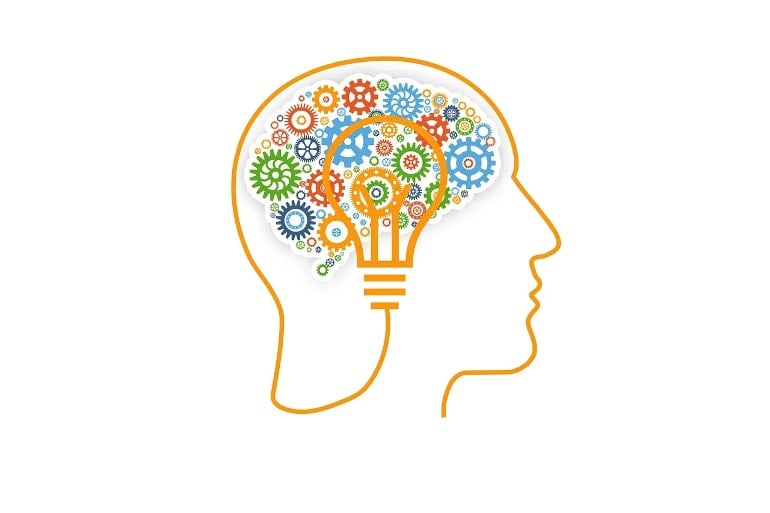Summary: Cognitive control training that focuses on important factors while ignoring distractions enhances information processing and enables the ability to “learn to learn”.
Source: NYU
Cognitive training designed to focus on what’s important while ignoring distractions can enhance the brain’s information processing, enabling the ability to “learn to learn,” finds a new study on mice.
“As any educator knows, merely recollecting the information we learn in school is hardly the point of an education,” says André Fenton, a professor of neural science at New York University and the senior author of the study, which appears in the journal Nature.
“Rather than using our brains to merely store information to recall later, with the right mental training, we can also ‘learn to learn,’ which makes us more adaptive, mindful, and intelligent.”
Researchers have frequently studied the machinations of memory–specifically, how neurons store the information gained from experience so that the same information can be recalled later.
However, less is known about the underlying neurobiology of how we “learn to learn”–the mechanisms our brains use to go beyond drawing from memory to utilize past experiences in meaningful, novel ways.
A greater understanding of this process could point to new methods to enhance learning and to design precision cognitive behavioral therapies for neuropsychiatric disorders like anxiety, schizophrenia, and other forms of mental dysfunction.
To explore this, the researchers conducted a series of experiments using mice, who were assessed for their ability to learn cognitively challenging tasks. Prior to the assessment, some mice received “cognitive control training” (CCT). They were put on a slowly rotating arena and trained to avoid the stationary location of a mild shock using stationary visual cues while ignoring locations of the shock on the rotating floor. CCT mice were compared to control mice.
One control group also learned the same place avoidance, but it did not have to ignore the irrelevant rotating locations.
The use of the rotating arena place avoidance methodology was vital to the experiment, the scientists note, because it manipulates spatial information, dissociating the environment into stationary and rotating components.
Previously, the lab had shown that learning to avoid shock on the rotating arena requires using the hippocampus, the brain’s memory and navigation center, as well as the persistent activity of a molecule (protein kinase M zeta [PKMζ]) that is crucial for maintaining increases in the strength of neuronal connections and for storing long-term memory.

“In short, there were molecular, physiological, and behavioral reasons to examine long-term place avoidance memory in the hippocampus circuit as well as a theory for how the circuit could persistently improve,” explains Fenton.
Analysis of neural activity in the hippocampus during CCT confirmed the mice were using relevant information for avoiding shock and ignoring the rotating distractions in the vicinity of the shock. Notably, this process of ignoring distractions was essential for the mice learning to learn as it allowed them to do novel cognitive tasks better than the mice that did not receive CCT.
Remarkably, the researchers could measure that CCT also improves how the mice’s hippocampal neural circuitry functions to process information. The hippocampus is a crucial part of the brain for forming long-lasting memories as well as for spatial navigation, and CCT improved how it operates for months.
“The study shows that two hours of cognitive control training causes learning to learn in mice and that learning to learn is accompanied by improved tuning of a key brain circuit for memory,” observes Fenton. “Consequently, the brain becomes persistently more effective at suppressing noisy inputs and more consistently effective at enhancing the inputs that matter.”
The paper’s other authors were: Ain Chung and Eliott Levy, NYU doctoral students at the time of the research; Claudia Jou a doctoral student at the City University of New York’s Hunter College and the Graduate Center; Alejandro Grau-Perales and Dino Dvorak, NYU postdoctoral fellows at the time of the study; and Nida Hussain, a student at NYU’s College of Arts and Science at the time of the study.
Funding: The research was supported by grants from the National Institutes of Health (R01MH115304, R01NS105472, and R01AG043688).
About this learning and memory research news
Author: James Devitt
Source: NYU
Contact: James Devitt – NYU
Image: The image is in the public domain
Original Research: Closed access.
“Cognitive control persistently enhances hippocampal information processing” by André Fenton et al. Nature
Abstract
Cognitive control persistently enhances hippocampal information processing
Could learning that uses cognitive control to judiciously use relevant information while ignoring distractions generally improve brain function, beyond forming explicit memories? According to a neuroplasticity hypothesis for how some cognitive behavioural therapies are effective, cognitive control training (CCT) changes neural circuit information processing. Here we investigated whether CCT persistently alters hippocampal neural circuit function.
We show that mice learned and remembered a conditioned place avoidance during CCT that required ignoring irrelevant locations of shock. CCT facilitated learning new tasks in novel environments for several weeks, relative to unconditioned controls and control mice that avoided the same place during reduced distraction. CCT rapidly changes entorhinal cortex-to-dentate gyrus synaptic circuit function, resulting in an excitatory–inhibitory subcircuit change that persists for months. CCT increases inhibition that attenuates the dentate response to medial entorhinal cortical input, and through disinhibition, potentiates the response to strong inputs, pointing to overall signal-to-noise enhancement.
These neurobiological findings support the neuroplasticity hypothesis that, as well as storing item–event associations, CCT persistently optimizes neural circuit information processing.







